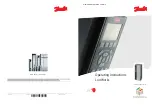
Page 38 H0 Sound Decoder MX640
Using LED or logic level outputs:
Locomotives with standardized interface. .
(8-pin, 6-pin or 21-pin)
. . . are easy to retrofit with the MX...
R
or MX...
F
that come with an 8-pin (NEM652) or 6-pin (NEM
651) plug, although only what the interface connections control (i.e. rails, motor, headlights. Other
functions and speakers must be wired separately). There is usually enough room provided in such
locomotives and by removing the dummy plug from the loco, all damaging connections mentioned at
the beginning of the chapter are broken (except for interference components mentioned earlier) and
the decoder can be plugged in instead.
Besides the normal function outputs (Headlights, FO1, FO2, FO3 and FO4), the MX640 decoders
also have so called “LED or logic level” outputs (FO5, FO6, FO7, FO8 and FO9), to which current
consuming devices may not be connected directly due to the low-load logic power available (0V,
5V).
However,
one LED
can be connected directly to each of these outputs (the required LED resistor is
built into the decoder); each output provides a maximum of 10mA, see schematic on previous page.
NOTE: Connecting an LED to “logic level” outputs is allowed on MX640 decoders but on many other
ZIMO decoders it is not (MX620, MX63, MX64…) and would lead to overheating!
MX640D – Decoder with 21-pin interface:
If an “LED or logic level” output is to be used with a “normal” load, a M4000Z amplifier module or
similar has to be used between the output and the load.
This decoder has a 21-pin female plug on the circuit board (no wires), which allows the decoder to be
plugged directly in to the 21-pin male receptacle of locomotives equipped with such interfaces. There are
actually 22 pins present but one of those pins (#11, top right) serves as a key to prevent wrong installa-
tions.
The meaning of the individual pins is usually not important to the user. The pins marked “n.c” are not used,
they are reserved for special applications (Hall-effect sensors).
The MX640D can be
plugged-in two ways;
the board below the connector is perforated,
so that
depending on the locomotive
, the
decoder can be plugged in from the top or
bottom end.
The key pin 11 prevents a
wrong installation by not allowing the
decoder to be pushed all the way down.
This and/or the decoder not sitting level
on the board indicate a wrong install-
ment!
The “SUSI” interface:
The SUSI interface developed by Dietz is an NMRA standard and defines the connection between
sound modules or other add-on components and loco decoders, provided they are also equipped
with such an interface.
Speed and load information (e.g. to change sound intensity when going uphill, downhill, start up etc.)
are sent from the decoder to the SUSI device.
Accessing SUSI CV’s:
These CV’s are in the 890 range, according to the standard (NMRA DCC
Draft RP), which is not accessible with many DCC systems. For this reason, ZIMO decoders allow
access to these CV’s with numbers in the 190’s!
Connecting an electric uncoupler (System “Krois”):
MX640D plugged into TRIX loco board
MX640D plugged in right side up, Pins of the loco board
penetrate through the decoder board into the socket.
MX640D plugged into BRAWA loco board
MX640D is plugged in upside down !
Loco board
Loco board
In order to prevent damage from excess power to the delicate core of an uncoupler, appropriate adjust-
ments can be made with special CV’s for one or several function outputs (up to FO6).
First, write the value “48” to the CV that is assigned to the same output the uncoupler is connected to (e.g.
CV #127 for output #1, CV #128 for output #2 etc.)
Next define the uncoupler activation time limit in CV #115 (see CV-table):
With the
“Krois uncouplers”
, it is recommended to use a value of “60”, “70” or “80” for CV #115; this
means that the pull-in voltage (full track voltage) is limited to 2, 3 or 4 seconds. A reduced “hold” voltage is
not required for Krois, that’s why the ones digit is left at 0. Other uncouplers may need a reduced hold volt-
age though, like the ones from ROCO for example.
Regarding the “automated coupler detachment”, see CV #116, chapter 4.
MX640 – Connecting servo and smart servo motors:
2 servo control outputs are available at the MX640 (solder pads or part of the 21-pin socket) for the
control of commercially available servo motors or SmartServo RC-1 (Manufactured by TOKO Corp.
Japan).
This is actually an
alternative use of the SUSI outputs
(which may be solder pads or part of the
21-pin connector; each output can be connected to a control input of a servo.








































